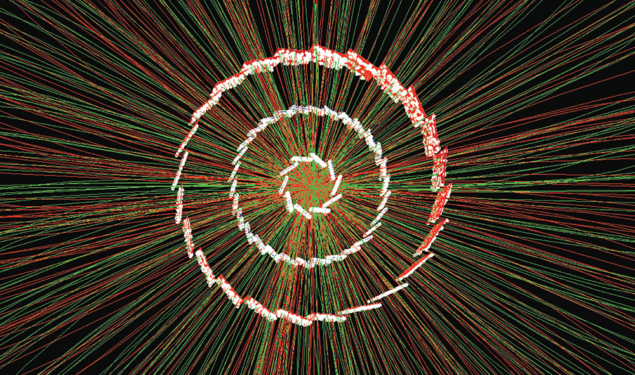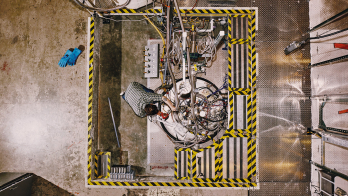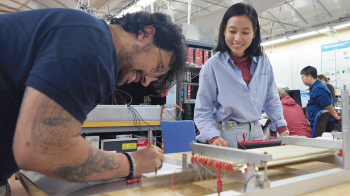
A new technology has enabled the STAR collaboration at Brookhaven National Laboratory’s Relativistic Heavy-Ion Collider (RHIC) to greatly expand its ability to reconstruct short-lived charm hadron decays, even in collisions containing thousands of tracks. A group of STAR collaborators, led by Lawrence Berkeley National Laboratory, used 400 Monolithic Active Pixel Sensor (MAPS) chips in its new vertex detector, called the heavy-flavour tracker (HFT), representing the first application of this technology in a collider experiment.
The HFT reconstructs charmed hadrons over a broad momentum range by identifying their secondary decay vertices, which are a few tens to hundreds of micrometres away from the collision vertex. The charmed hadrons are used to study heavy-quark energy loss in a quark–gluon plasma (QGP) and to determine emergent QGP-medium transport parameters.
The MAPS sensor is based on the same commercial CMOS technology that is widely used in digital cameras. It comprises an array of 928 × 960 square pixels with a pitch of 20.7 × 20.7 μm2 to provide a single-hit resolution of <6 μm. The sensors are thinned to a thickness of 50 μm and mounted on a carbon-fibre mechanical support, and their relatively low power consumption (170 mW/cm2) allows the detector to be air-cooled. The thinness is important to minimise multiple scattering in the HFT, allowing for good pointing resolution even for low transverse-momentum charged tracks.
The heavy-flavour physics programme enabled by the HFT has been one of the driving forces for RHIC runs from 2014 to 2016. The first measurement with the HFT on the D0 elliptic collective flow shows that D0 mesons have significant hydrodynamic flow in gold–gold collisions, and the HFT pointing resolution also enabled the first measurement of charmed-baryon production in heavy-ion collisions.
Building on the success of the STAR HFT, the ALICE collaboration at CERN’s Large Hadron Collider is now building its own MAPS-based vertex detector – the ITS upgrade – and the sPHENIX collaboration at RHIC is also planning a MAPS-based detector. These next-generation detectors will have much faster event readout, by a factor of 20, to reduce event pileup and therefore allow physicists to reconstruct bottom hadrons more efficiently in high-luminosity, heavy-ion collision environments.
Further reading
G Contin et al. 2018 Nucl. Instrum. Methods Phys. Res A doi:10.1016/j.nima.2018.03.003.








